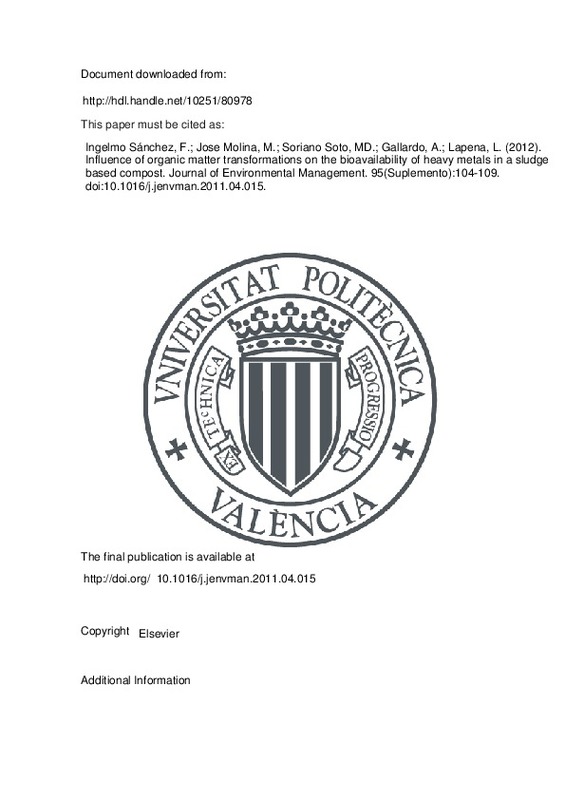JavaScript is disabled for your browser. Some features of this site may not work without it.
Buscar en RiuNet
Listar
Mi cuenta
Estadísticas
Ayuda RiuNet
Admin. UPV
Influence of organic matter transformations on the bioavailability of heavy metals in a sludge based compost
Mostrar el registro completo del ítem
Ingelmo Sánchez, F.; Molina, MJ.; Soriano Soto, MD.; Gallardo, A.; Lapeña, L. (2012). Influence of organic matter transformations on the bioavailability of heavy metals in a sludge based compost. Journal of Environmental Management. 95(Suplemento):104-109. https://doi.org/10.1016/j.jenvman.2011.04.015
Por favor, use este identificador para citar o enlazar este ítem: http://hdl.handle.net/10251/80978
Ficheros en el ítem
Metadatos del ítem
| Título: | Influence of organic matter transformations on the bioavailability of heavy metals in a sludge based compost | |
| Autor: | Ingelmo Sánchez, Florencio Molina, María José Gallardo, Antonio Lapeña, Leonor | |
| Entidad UPV: |
|
|
| Fecha difusión: |
|
|
| Resumen: |
[EN] The agricultural use of anaerobically digested sewage sludge (ADSS) as stable, mature compost implies knowing its total content in heavy metals and their bioavailability. This depends not only on the initial characteristics ...[+]
|
|
| Palabras clave: |
|
|
| Derechos de uso: | Reserva de todos los derechos | |
| Fuente: |
|
|
| DOI: |
|
|
| Editorial: |
|
|
| Versión del editor: | http://doi.org/10.1016/j.jenvman.2011.04.015 | |
| Código del Proyecto: |
|
|
| Agradecimientos: |
This work was part of the Generalitat Valenciana projects IIARCO2004-A-196, IIARCO2004-A-212, and IIARCO/2004/213, and the national project 135/2004/3 (Ministerio de Medio Ambiente). We thank FACSA Sewage Treatment Plant ...[+]
|
|
| Tipo: |
|







![[Cerrado]](/themes/UPV/images/candado.png)


